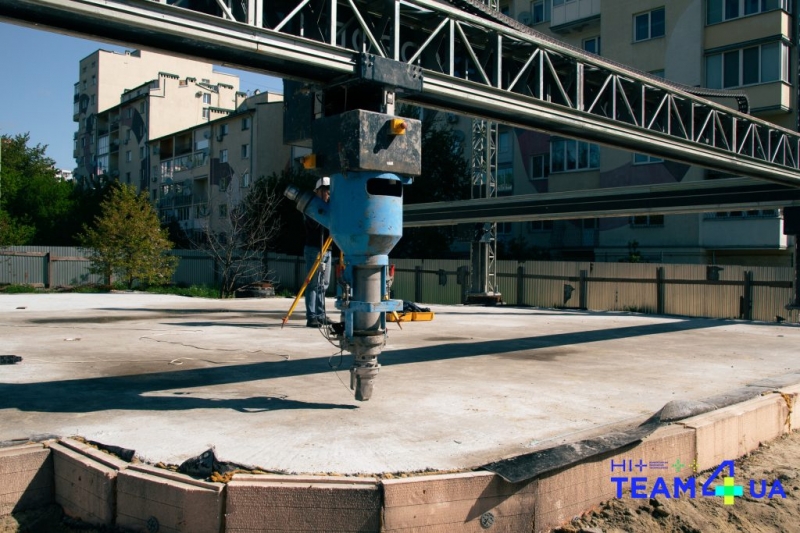The second stage of construction of the school building, which is being built using 3D printing technology, has begun in Lviv. Construction will take about five weeks and will be completed in June of this year.
The architectural and interior design concept for the project was created by the Kyiv-based Balbek Bureau. The architectural firm Ars Longa team developed the project documentation and provides author supervision for the construction.
According to the Ministry of Education and Science of Ukraine, more than two thousand damaged and 277 completely destroyed schools were recorded as a result of the full-scale invasion in Ukraine. Therefore, the rapid response to the problem of insufficient educational infrastructure in the country is the main goal of the project initiators. The implementation of 3D printing technology will help to quickly and efficiently reduce the deficit of educational infrastructure and also promote the reconstruction of housing and infrastructure in Ukraine in the future.
Construction of the school building began in November 2022. In the first stage, the project team managed to lay the foundation of the future school, but later the construction process was stopped due to massive rocket attacks on Ukraine, lack of electricity supply, and unstable weather conditions. Therefore, the active phase of the work was decided to be resumed in the spring of the next year. Currently, the project team plans to complete the construction of the walls and roof of the school building by June of this year.
According to the project concept, the school building will have one floor, where classrooms, a teacher’s room, restrooms, and a hall with an inclusive space capable of accommodating all categories of students, including children with special needs, will be located. In addition, 90% of the materials needed for construction are made in Ukraine.
3D printing technology has several advantages over traditional construction. In particular, a 3D printer helps to build buildings tens of times faster and requires the involvement of only two operators. In addition, this technology allows for more accurate and efficient use of resources, reducing waste and saving costs.

